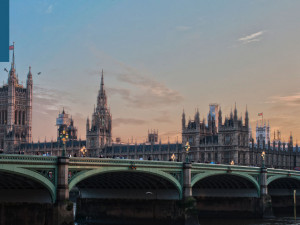
Sunak to cut fuel duty by 5p?
Morning mid-market rates – The majors
March: Highlights
- Sunak doesn’t want to be the Fairy Godfather, or last resort
- Economy beginning to slow
- Lagarde sees no signs of stagnation
The Spring Statement is likely to be overly optimistic
One of the measures that he is apparently considering is a cut of five pence in the duty that is charged on fuel. Duty currently makes up almost fifty-eight pence of the cost of a litre of fuel.
Having been credited with almost single-handedly saving households from disaster when the first Coronavirus lockdowns took place, Sunak is concerned about being seen as the person the country turns to in times of crisis.
Far from having a light touch on the economy, Sunak is being seen as a last resort when a bailout is needed.
It is not his intention that the Government should be looked upon to supply support at times when the economy is in a downturn, irrespective of the reason.
National Insurance contributions will rise by 1.25% next month to supply additional funding to the NHS. It is rumoured that Sunak is planning to raise the threshold at which those on low incomes begin to pay NI.
Government data predicts that the average household will be worse off by £300 per annum as the cap on fuel prices charged to consumers is increased. However, independent studies put the cost at closer to £750.
Opposition Parties are urging the Chancellor to introduce a windfall tax on the excessive profits being made by energy companies, who see exponential profits as the price of energy rises while their costs remain unchanged.
There has been a rising demand that VAT on fuel prices be cut but that appears to have been ruled out for now. The Government is loath to change its tax structure every time there is a crisis in the economy since such moves play havoc with budgeting and planning outcomes.
The pound has started the week on the back foot against the dollar as resistance close to 1.32 holds firm.
It fell to a low of 1.3126, closing at 1.3169. A more aggressive policy of hiking interest rates in the U.S. will see the pound fall, possibly to test support around the 1.30 level.
Considering your next transfer? Log in to compare live quotes today.
Powell’s necessary action will mean 50bp hike(s)
The Chicago Fed National Activity Index fell by far more than the market had expected in February, while the January data was revised lower.
Industrial production is still in the black, although a rise of just 0.5% was appreciable lower than January’s 1.4% increase.
The Department of Labour confirmed that payrolls increased by 678k, and the unemployment rate fell to 3.8%. Tightness in the jobs market may encourage a rise in wages that will spell further unwelcome news for the Central bank, which is hoping that inflation doesn’t spill over from the supply side of the economy.
FOMC member and Atlanta Fed President, Raphael Bostic spoke yesterday of the need for the Fed Funds rate to reach at least its neutral level as soon as possible. He believes the neutral level to be 2.25%. This is at the upper end of the range mentioned by Bostic’s FOMC colleague Neel Kashkari in comments made over the weekend.
Bostic is concerned that employers are setting wage increases to try to keep up with rising inflation, and he hopes that this will not become a permanent fixture.
Bostic also believes that the Fed’s consideration of the shrinking of its balance sheet should not be affected by the conflict in Ukraine. He believes that the action on the balance sheet that has been mentioned in conjunction with a hike in interest rates will take place more quickly than the last time the Fed made such a move, in the wake of the financial crisis.
Bostic expects that inflation will be around 4% by the end of the year as the Fed becomes more aggressive in its hiking of interest rates.
In Contrast with Kashkari, Bostic doesn’t see the need, based upon current projections, to take interest rates above neutral to ensure that inflation comes back under control.
Fed President Jerome Powell was also on the wires yesterday. He confirmed the current belief that inflation is far too high. He believes that the Central Bank may start to move more expeditiously and aggressively lower inflation.
Such urgency marks a more hawkish development to the Fed’s actions and will keep the dollar on the front foot going forward.
Yesterday, the dollar index rose to a high of 98.81, closing at 98.76. A test of resistance at 99.25 is likely in the next few days as Fed officials appear to be speaking with one voice over the need for tougher action to curb inflation.
A sense of realism needed if the Eurozone is to survive
Yesterday, Lagarde tried to play down fears of stagflation appearing in the Eurozone economy.
While physical signs are yet to appear, rising inflation coupled with a weakening economy, due in no small part to the conflict in Ukraine, should have set alarm bells ringing.
Her words echo her belief that there is still a window of opportunity on which the economy can continue to be supported.
That view is opposite to that of the more hawkish members of the ECB, who passionately believe that the time to tackle inflation is not only now but has been the case since at least the end of the year.
It is a common theme that there needs to be discussion over the economic viability of the Eurozone once the current crisis ends. This has been said for close to a decade but the negotiation of Brexit, followed by the Coronavirus Pandemic and the invasion of Ukraine by Russia has afforded no time for any relevant discussion.
Given the recovery that is being seen in economic activity, we do not see signs of stagnation in our projections for 2022,2023 or 2024. These were the words of Lagarde yesterday. They are completely opposite to the view of several market commentators, who believe that the economy may already be experiencing the first signs of stagflation.
The ECB recently cut its forecast for growth in the economy and raised its inflation outlook, yet Lagarde refuses to even consider that stagflation is a concern.
It is difficult to see the ECB’s Governing Council not coming to some form of conflict of its own if its President continues to express views that are so different from the consensus.
Such a mix of views and expectations cannot be positive for the single currency. Yesterday, the euro fell to a low of 1.1010 and closed at 1.1015. It is showing signs of running out of steam and may face a prolonged spell below the 1.10 level, particularly if the conflict in Ukraine looks like becoming an extended war of attrition.

About Alan Hill
Alan has been involved in the FX market for more than 25 years and brings a wealth of experience to his content. His knowledge has been gained while trading through some of the most volatile periods of recent history. His commentary relies on an understanding of past events and how they will affect future market performance.”



